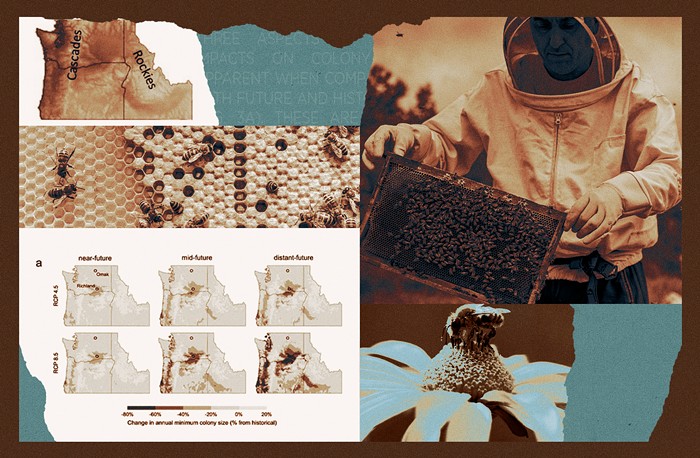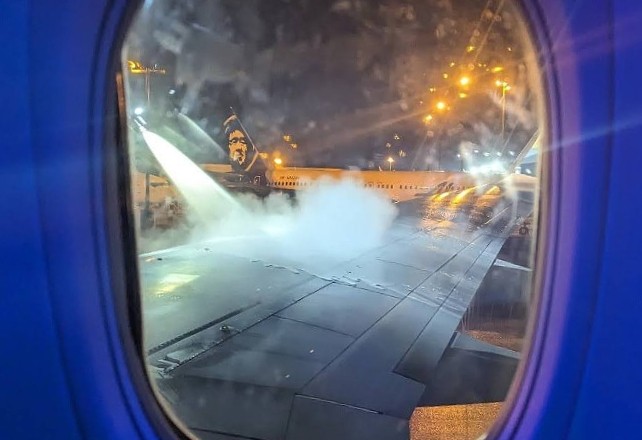
Many global populations of animals are rapidly sliding toward functional extinction, which is, in short, an ecologically relevant status of highly diminished species that no longer functionally modify their ecosystem. There are parallels between the functional extinction of species and the experience of navigating the Seattle housing market as a paycheck-to-paycheck single mom. We can see the houses, we know they are there, but they no longer interact with the cultural and economic system that we function inside of. To many of us, those homes are also functionally extinct.
For us here in Seattle, our environmental and cultural matriarchs are the Southern Resident killer whales, or orcas. If you are a good Seattleite, you know this because you likely have some sort of orca art in your home or bathroom. What you might not know is that, as of December 2017, there are only 76 Southern Resident killer whales remaining in Puget Sound. This is a 30-year low for a population listed as an endangered species. The Southern Residents, in reticent and cautious scientific terminology, are “significantly imperiled.” When you hear the numbers, the fragility of these populations becomes a bit clearer. We are talking about handfuls of orcas. A backyard chicken coop of orcas. A small hobby farm of orcas.
Now, obviously, there are colonial and cultural lines that we must draw in understanding our alliances, or lack thereof, with the orca. The human explants—here for the railroads, the timber, the fisheries, the planes, the computers, or the Amazon—do not own the orca. But we do own their deaths, through their polychlorinated biphenyl (PCB)–laden flesh, their noisy habitat crowded with fossil-fuel-consuming pleasure craft, and the scarcity of Chinook salmon. We did these things to Puget Sound through developing and hardening our coastline and removing soft sediment and subtidal eelgrass habitat, and through the hydroelectric dams that constrict and define the flow of snowmelt out of the North Cascades, through our voracious appetite for Chinook salmon and our bickering and shortsighted catch limits, through our affinity for carcinogenic compounds like PCB, which bioaccumulate in the fatty tissues of apex predators.
Also through our overzealous recreational boating in Puget Sound that treats the sunken mountain range like some sort of disposable, noisy marine Disneyland. And through our addition of carbon dioxide into the atmosphere, which does a myriad of terrible things, including warming, stratifying, and deoxygenating the waters of Puget Sound, acidifying the surface waters so that, for example, pteropods (small mollusks that contribute to the Chinook diet) cannot efficiently calcify their shells, and, last but not least, through warming stream temperatures and reducing stream flow due to the decline in North Cascade snowpack.
Last week, in a Hail Mary attempt to muster state resources, Governor Jay Inslee signed an executive order to address three principal problems that our Southern Residents face, including the scarcity of Chinook salmon, environmental toxin loading, and noise disturbances from vessel traffic. Thankfully, we still have political leaders that can connect environmental crises to climate warming and ocean acidification, and Governor Inslee directly stated that both Chinook and Southern Resident populations are adversely impacted by these globally forced changes to Puget Sound. Preach it, Jay.
Some of us who live in Seattle are lucky enough to have seen the J, K, or L orca pods in Puget Sound. These toothed whale residents (as in, they live *here* folks) are a little community—small matriarchies, with culture, diet, dialect, and rituals all of their own. They are irreplaceable. They are the manifest ecology of the geologic history of the Puget Sound—an isolated and scrambled archipelago that, only 18,000 years ago, was covered in a never-ending night underneath a mile of glacial ice. Many more of us in Seattle have never seen the orcas. We only know of them emblazoned on Seattle memorabilia and the insides of state ferries. This is likely how people will know the orca in the future. A empty throwback to a Puget Sound gone forever. Extinction, though extreme, is an appropriate word to use when considering the future of the Southern Resident killer whales.
How do we grapple with the decline of our matriarchs? Our cultural icons are suffering directly from of our lifestyles of convenience and consumption, lifestyles that are simultaneously bereft of meaning and connection to the land. I have no answers—I am at a loss. But the windows into grief that we personally experience might provide a place to start.
My grandmother, my matriarch, died three weeks ago in hospice care. There were 11 of us in the room when she died. I was next to her right shoulder, and I held her as she rattled and shook with her last dozen breaths. When her breathing stopped, someone called out from the foot of the bed: “Is her heart still beating?” Obeying familial orders (that’s what you do), my aunt Barb and I leaned forward at the exact same time and bonked our foreheads together, trying to get an ear to the quiet chest. We laughed. And then we cried. There was nothing else to be done. I mean, what do you to when your matriarchs die?















